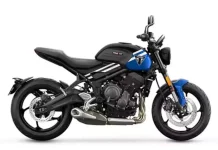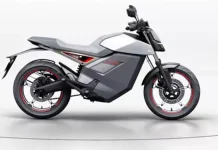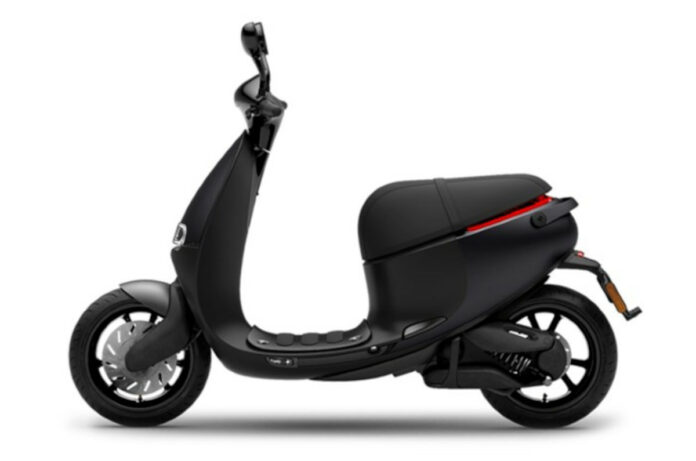2023: A Landmark Year in the Indian Two-Wheeler Industry
Introduction
In 2023, the Indian two-wheeler industry witnessed a transformative year, marked by pivotal developments and a distinct shift towards electric vehicles (EVs). This period stood as a testament to the industry’s resilience and adaptability in the face of evolving market dynamics and policy changes.
Particularly notable was the rapid growth in the electric two-wheeler segment, reflecting a broader trend towards sustainable and eco-friendly transportation solutions. Despite facing challenges such as changes in government subsidies, the industry not only navigated these hurdles but also capitalized on emerging opportunities.

Indian Two-Wheeler Industry 2023
The Indian two-wheeler industry in 2023 witnessed notable shifts, primarily towards electric vehicles (EVs), impacting the economy significantly. The reduction in FAME-II subsidies led to higher EV prices but didn’t deter market growth, indicating strong consumer demand. Electric two-wheelers, dominating over 70% of vehicle sales, signify a major trend towards eco-friendly transport, reducing oil dependency and pollution.
The trend also spurred job creation and technological innovation in the EV sector. Despite initial challenges, the industry’s resilience suggests a positive outlook for India’s economic growth and environmental sustainability, marking a pivotal year in the country’s automotive evolution.
Electric Vehicles in India
This analysis delves into the key highlights of the year, examining the implications of these trends and their impact on the future trajectory of the two-wheeler industry in India.
The two-wheeler industry in India during 2023 experienced several significant developments and shifts. Key highlights of the industry for the year include:
- Electric Two-Wheelers Becoming More Expensive: Due to changes in the FAME-II subsidy scheme, electric two-wheelers saw an increase in prices. The government reduced the subsidy cap to 15% of the electric vehicle’s (EV) ex-factory price, a significant decrease from the previous 40% benefit.
- Volume Growth in the EV Sector: Despite the reduction in subsidies, the electric vehicle industry, particularly the two-wheeler segment, witnessed notable volume growth. This development suggests a growing market acceptance and demand for electric two-wheelers in India.
- Electric Two-Wheelers Leading in Sales: Electric two-wheelers, such as motorcycles and scooters, have become a vital component of India’s mobility ecosystem, constituting over 70% of all vehicles in the country. This trend is indicative of the bright future for electric mobility in India, especially in the two-wheeler segment.
- Record Sales Figures: In November 2023, the Indian two-wheeler market experienced an unprecedented surge in sales, achieving a 49.05% month-on-month growth. This period saw the sale of over 22.47 lakh units, highlighting the robust demand and growth potential of the two-wheeler market in India.
- MotoGP India : The MotoGP India Grand Prix 2023 was highlighted by Marco Bezzecchi’s victory in a near-flawless race, while world champion Francesco Bagnaia crashed out after a dramatic incident. Jorge Martin secured second place after intense competition, including a close contest with Fabio Quartararo. The race, held at the Buddh International Circuit, faced adjustments due to challenging weather conditions, leading to a reduction in the number of laps. This event marked a significant milestone in India’s two-wheeler racing history for the year.
These developments collectively indicate a year of both challenges and opportunities for the two-wheeler industry in India. The increase in electric two-wheeler prices due to subsidy reductions presented a challenge, yet the industry continued to demonstrate strong growth and market penetration. This resilience suggests a positive outlook for the industry, particularly in the realm of electric mobility.
FAME-II Subsidy Impact
The key analysis of the Indian two-wheeler industry in 2023 reveals several critical insights and underlying trends:
- Impact of FAME-II Subsidy Changes on Prices: The revision in the FAME-II subsidy, reducing the cap to 15% of the electric vehicle’s ex-factory price, had a direct impact on the pricing of electric two-wheelers. This policy change made electric vehicles more expensive, potentially affecting consumer purchasing decisions. It’s important to analyze whether this price increase led to a shift in consumer preferences or if the intrinsic value proposition of EVs (like lower running costs and environmental benefits) continued to drive demand.
- Volume Growth Amidst Subsidy Cuts: Despite the subsidy reduction, the electric two-wheeler sector experienced significant volume growth. This indicates a robust underlying market demand, possibly driven by increasing environmental awareness, the rising cost of conventional fuels, and improvements in EV technology. The growth in volume, even without the earlier level of government incentives, suggests a maturing market that is beginning to stand on its own.
- Electric Two-Wheelers Dominating Sales: The fact that electric two-wheelers constituted over 70% of all vehicles sold is a remarkable indicator of the shifting dynamics in the Indian automotive sector. This trend could be attributed to a combination of factors, including urbanization, the increasing practicality of EVs for city commutes, and a growing awareness of environmental issues. This shift also raises questions about the future of traditional internal combustion engine vehicles in the Indian market.
- Record Sales in November 2023: The unprecedented sales growth in November 2023, with a 49.05% month-on-month increase, highlights the strong consumer demand and potential for growth in the two-wheeler market in India. This surge could be attributed to various factors, such as festive season purchases, new model launches, or an economic upturn. Understanding the drivers behind this spike is crucial for predicting future market trends.
- Resilience and Outlook: The Indian two-wheeler industry’s resilience in the face of policy changes and price hikes, coupled with its ability to capitalize on market opportunities, paints a positive outlook for the future. This suggests that the industry is well-positioned to adapt to further changes, whether they are in consumer preferences, technological advancements, or government policies.
The year 2023 was a defining period for the two-wheeler industry in India, marked by a significant shift towards electric mobility despite challenges. The industry’s response to these changes and its continued growth trajectory offer valuable insights into the evolving landscape of Indian automotive market and its readiness for a more sustainable and technologically advanced future.
Electric Two-Wheeler Sales
Impact on Indian Economy
The significant developments in the Indian two-wheeler industry in 2023, particularly the shift towards electric vehicles (EVs), had a multifaceted impact on the Indian economy:
- Economic Growth and Job Creation: The surge in the two-wheeler market, especially in the electric segment, likely contributed to economic growth. This growth is not just in terms of sales figures but also in the expansion of the industry’s ecosystem, including manufacturing, supply chain, and retail sectors. The rise of electric two-wheelers also spurred investments in related areas like battery manufacturing and charging infrastructure, potentially creating new jobs and supporting ancillary industries.
- Shift in Energy Dependency: With a significant move towards electric two-wheelers, India’s dependency on oil imports could see a gradual decline. This shift has implications for the country’s trade balance and energy security. Reducing reliance on imported fossil fuels can lead to a more favorable trade balance and help mitigate the risks associated with oil price volatility.
- Environmental Impact: The widespread adoption of electric two-wheelers contributes to reducing air pollution, a significant concern in many Indian cities. This environmental benefit aligns with national and global sustainability goals and can improve public health, potentially reducing healthcare costs associated with pollution-related diseases.
- Innovation and Technological Advancements: The growth of the EV sector in India fosters an environment of innovation and technological development. Investments in research and development for better batteries, more efficient electric motors, and advanced charging solutions can position India as a key player in the global EV technology market.
- Consumer Spending Patterns: The initial increase in prices of electric two-wheelers, due to subsidy cuts, might have influenced consumer spending patterns. While it could have led to a short-term reduction in discretionary spending in other areas, the long-term cost benefits of owning an EV (like lower running and maintenance costs) could lead to increased disposable income for consumers in the long run.
- Policy and Regulatory Impact: The government’s role in shaping the EV market through policies like FAME-II influences the broader economic landscape. The reduction in subsidies, while initially leading to higher prices, might encourage more efficient market dynamics and potentially stimulate further government support for infrastructure development, which is crucial for the sustained growth of the EV sector.
Tthe trends and developments in the Indian two-wheeler industry in 2023, especially the shift towards electric mobility, had significant implications for the Indian economy. These ranged from contributing to economic growth and job creation, to impacting energy dependency and environmental sustainability, fostering innovation, influencing consumer spending, and shaping government policy. The overall impact is a complex interplay of these factors, indicating a transformative phase in India’s economic and environmental landscape.
Sustainable Mobility India
Conclusion
The year 2023 emerged as a landmark period for the Indian two-wheeler industry, particularly in the realm of electric mobility. The industry’s journey through the year was characterized by both challenges and triumphs. The increase in electric two-wheeler prices due to subsidy cuts posed a significant challenge, yet it was met with an unwavering market demand and a clear consumer shift towards electric vehicles.
The record sales figures and the dominance of electric two-wheelers in the market underscored the industry’s potential and the growing consumer appetite for eco-friendly transportation. These developments collectively paint a promising picture for the future, indicating a strong and sustained move towards electric mobility in India. As the industry continues to evolve, it stands on the brink of a new era, one that promises innovation, sustainability, and robust growth in the years to come.
As we observe the transformative trends in India’s two-wheeler industry, particularly the shift towards electric vehicles (EVs), it’s crucial for stakeholders across the spectrum to take proactive steps. Manufacturers and industry players should continue investing in R&D to enhance EV technology, focusing on battery efficiency, cost reduction, and infrastructure development.
Policymakers must revisit and potentially refine incentives and regulations to foster sustainable growth in the EV sector. Consumers are encouraged to embrace electric two-wheelers, considering their long-term economic and environmental benefits. Together, by embracing innovation and sustainability, we can propel India towards a greener, more efficient future in mobility. Let’s be part of this exciting journey and contribute to a sustainable transformation in the Indian automotive landscape.
Bull Leds, Asianlite, McKinsey, TimesofIndia





































